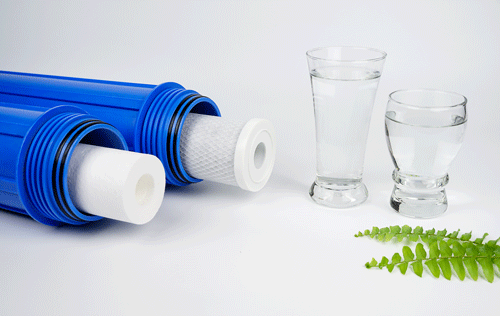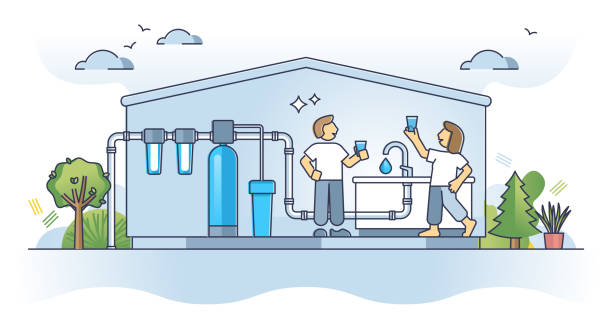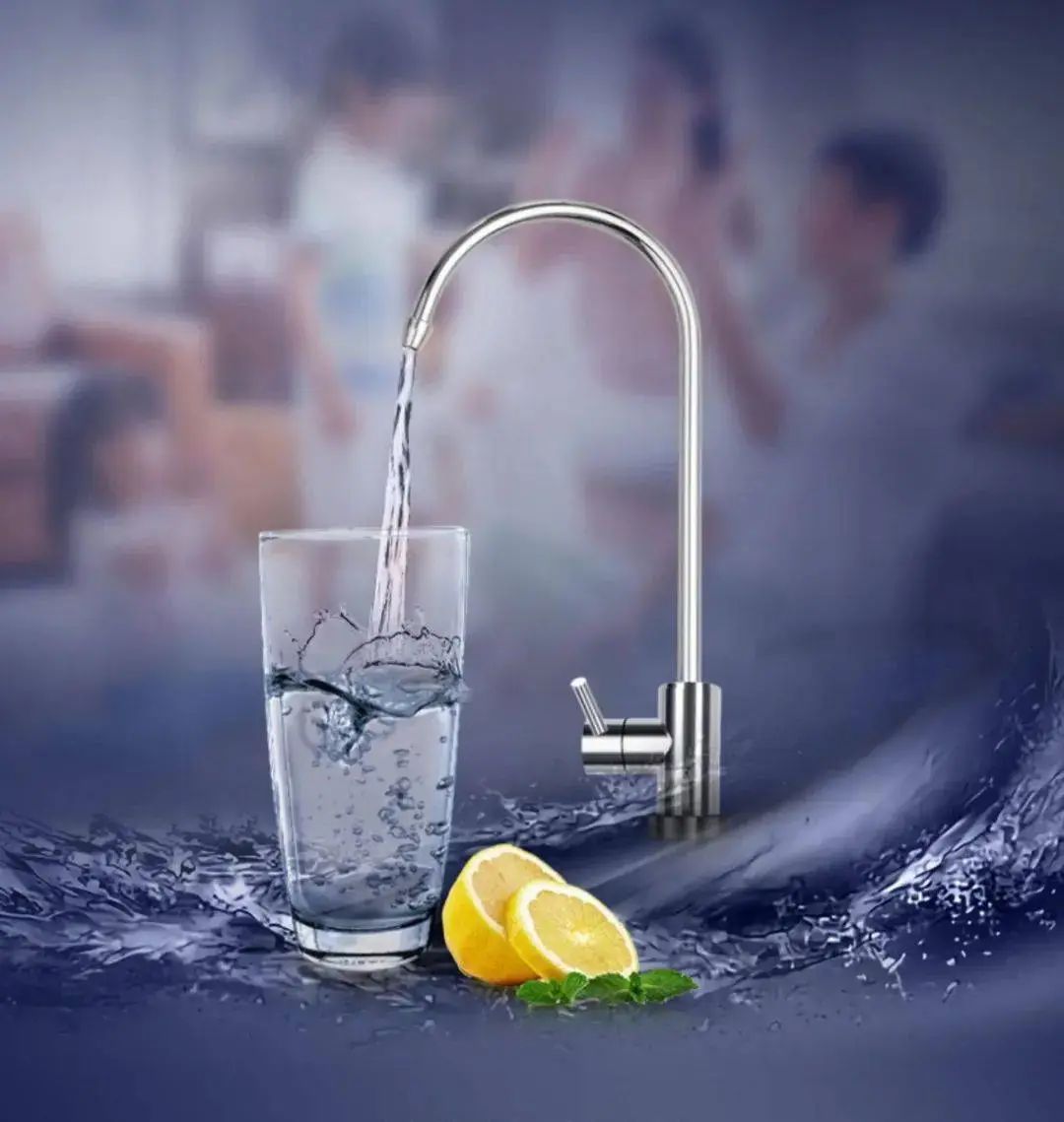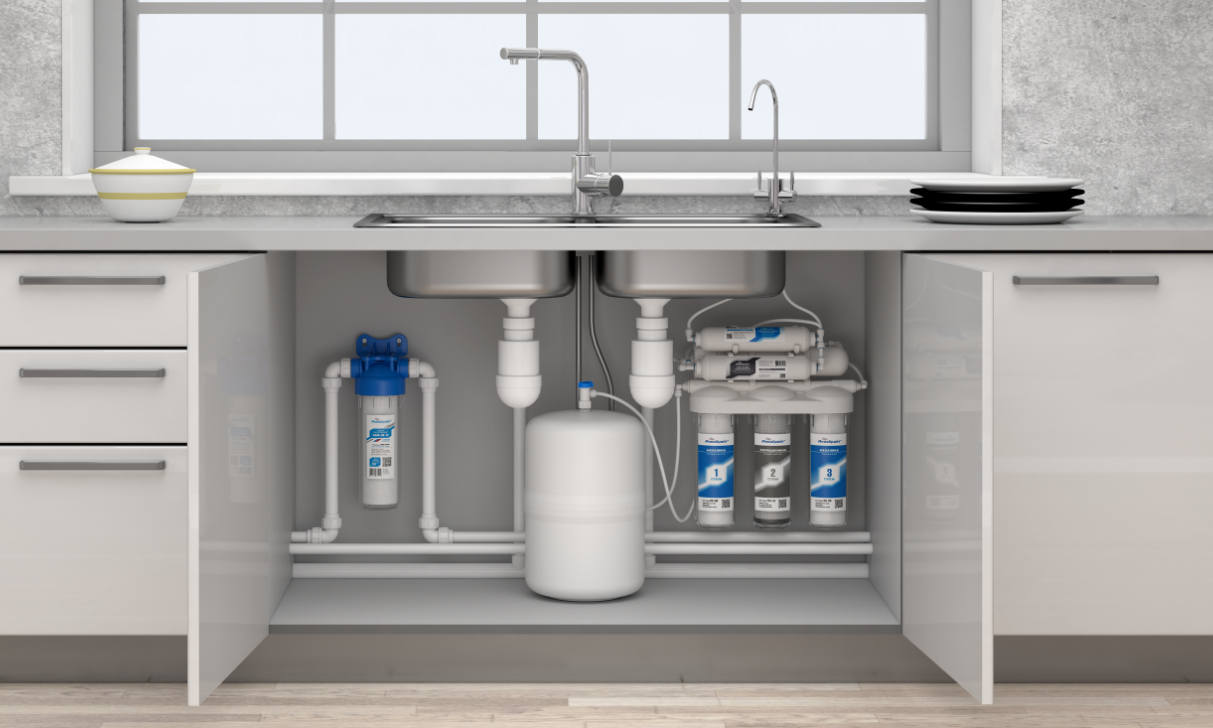Reverse Osmosis (RO) technology has become one of the most important technologies for water treatment and reuse due to its high separation performance. Among them, RO low-pressure membrane can realize effective separation at low operating pressure, showing significant energy-saving advantages and a wide range of potential applications. In this paper, we will introduce in detail the application of RO low pressure membrane and its unique value in many fields.
 First, RO low-pressure membrane working principle and characteristics
First, RO low-pressure membrane working principle and characteristics
RO low-pressure membrane is based on the principle of reverse osmosis, through the application of external pressure so that water molecules from the high concentration side through the semi-permeable membrane to the low concentration side of the permeability, and most of the ions, organic matter, bacteria, viruses, etc. by the membrane effectively blocked. Compared with high-pressure membranes, the main feature of low-pressure membranes is that they can realize the separation process under lower operating pressure (usually 0.5~1.6MPa), which significantly reduces the operating energy consumption. In addition, low-pressure membrane usually has a high flux of water production, can produce more purified water per unit of time, and in the treatment of low salinity, low hardness water source, can still maintain a high rate of desalination. These characteristics make RO low-pressure membrane in many areas show significant applicability.
 Second, RO low-pressure membrane in various fields of application and its advantages
Drinking water purification
Second, RO low-pressure membrane in various fields of application and its advantages
Drinking water purification: In homes, offices and communities, RO low-pressure membrane is widely used in direct drinking water dispensers and household water purifiers, which can effectively remove residual chlorine, heavy metals, organic matter, microorganisms, etc. from tap water, providing safe and healthy drinking water. Its lower operating pressure not only reduces energy consumption, but also makes the equipment more silent and compact, more suitable for home use environment.
 Food and beverage industry:
Food and beverage industry: In food processing and beverage production, RO low-pressure membranes are used to prepare pure water or ultrapure water as raw material water or cleaning water. Its energy-saving characteristics help companies reduce operating costs, while stable water quality to protect the quality and taste of the product. In addition, for liquid foodstuffs such as fruit juices and tea drinks that are directly consumed, RO low pressure membranes can also remove harmful components from the raw water and improve product quality.
Agricultural irrigation: In modern agriculture, RO low-pressure membranes are used to treat groundwater, surface water or reclaimed water to produce water quality suitable for crop irrigation. The high water flux provided by low pressure membranes at low energy consumption can meet the irrigation needs of large areas of farmland, while reducing the potential impact of salts and harmful substances on soil and crops, which is conducive to the sustainable development of agriculture.
Pharmaceutical industry: In pharmaceuticals, medical device cleaning, laboratory pure water preparation, etc., RO low-pressure membrane is used to prepare process water with high purity requirements. Their high desalination rate ensures the purity of the water and meets the strict pharmacopeia standards and GMP requirements. At the same time, the energy-saving feature helps to reduce the burden of environmental protection on enterprises, in line with the trend of green manufacturing in the pharmaceutical industry.
Wastewater treatment and reuse in light industry: For wastewater generated by light industry such as electroplating, printing and dyeing, leather, etc., RO low-pressure membrane can be used as a deep treatment unit to effectively remove salts and organics in the wastewater, and realize standard discharge or reuse in the production process. In the treatment of low-salt wastewater, low-pressure membrane of low energy consumption is particularly obvious, helping enterprises to achieve wastewater resources, reduce fresh water consumption.
Third, RO low-pressure membrane application value and future prospects
Energy saving and consumption reduction: RO low-pressure membrane in the operation process consumes less energy, which helps users and enterprises to reduce operating costs, in line with the global trend of energy saving and emission reduction. In the context of increasingly tense water resources, its energy-saving characteristics are of great significance in promoting the efficient utilization and sustainable management of water resources.
 Simplified equipment and cost control
Simplified equipment and cost control: Since low-pressure membranes do not require high-pressure pumps and high-strength pressure vessels, the structure of the equipment is relatively simple, and the initial investment and maintenance costs are low. This allows RO technology to be popularized in a wider range of scenarios, especially for small and medium-sized enterprises or areas with limited resources, providing an economically viable water treatment solution.
Technological innovation and market expansion: With the advancement of membrane material science and the optimization of membrane manufacturing process, the future RO low-pressure membrane is expected to further improve the separation efficiency, reduce energy consumption, and extend the service life on the basis of maintaining the existing advantages. This will promote its application in more emerging areas, such as new energy, environmental protection, fine chemicals and other industries, to broaden the market space.
In summary, RO low-pressure membrane is widely used in many fields such as drinking water purification, food and beverage industry, agricultural irrigation, pharmaceutical industry, and light industrial wastewater treatment and reuse by virtue of its advantages of high efficiency separation under lower pressure, energy saving and consumption reduction, and simplified equipment. It has played an important role in enhancing the efficiency of water resources utilization, ensuring water quality safety, promoting environmental protection and economic benefits, and has shown broad market prospects and far-reaching social value. With the continuous innovation of technology and the continuous growth of market demand, the application fields of RO low-pressure membrane will be further expanded, contributing to the construction of a green, economical and intelligent water resources management system.






 Whole house water purification is “pseudo demand”? 90% of the people are installed wrong! The scientific configuration guide is here!
Whole house water purification is “pseudo demand”? 90% of the people are installed wrong! The scientific configuration guide is here!
 Is a whole house water purification system an IQ tax, or a necessity of life? Read it and you'll understand!
Is a whole house water purification system an IQ tax, or a necessity of life? Read it and you'll understand!
 Home water purifier routine maintenance and maintenance is very important
Home water purifier routine maintenance and maintenance is very important